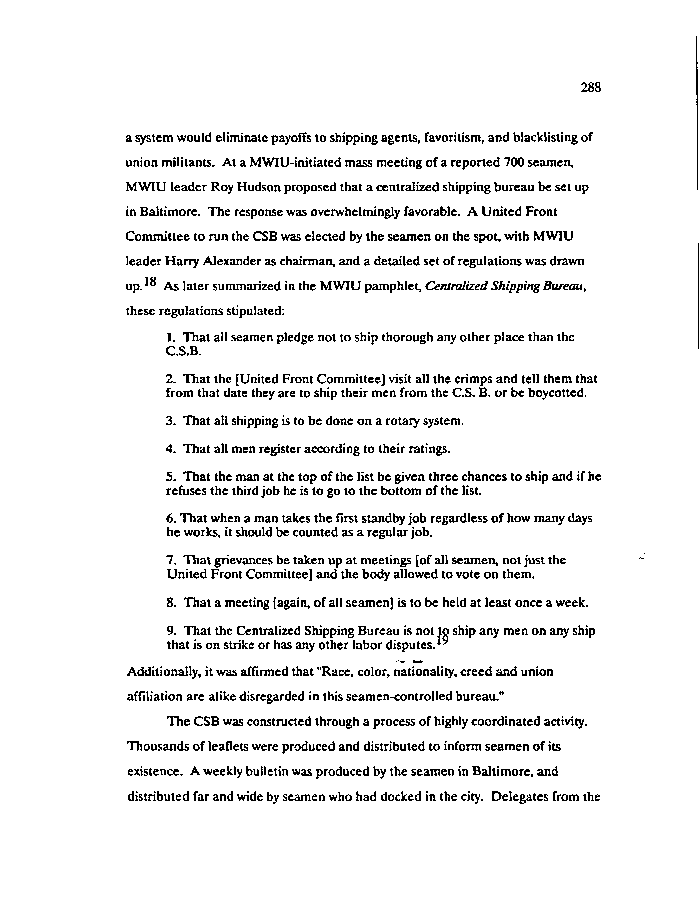|
288
a system would eliminate payoffs to shipping agents, favoritism, and blacklisting of
union militants. At a MWlU-initiated mass meeting of a reported 700 seamen,
MWIU leader Roy Hudson proposed that a centralized shipping bureau be set up
in Baltimore. The response was overwhelmingly favorable. A United Front
Committee to run the CSB was elected by the seamen on the spot, with MWIU
leader Harry Alexander as chairman, and a detailed set of regulations was drawn
up. ° As later summarized in the MWIU pamphlet, Centralized Shipping Bureau,
these regulations stipulated:
1. That all seamen pledge not to ship thorough any other place than the
C.S.B.
2. That the [United Front Committee] visit all the crimps and tell them that
from that date they are to ship their men from the C.S. B. or be boycotted.
3. That all shipping is to be done on a rotary system.
4. That all men register according to their ratings.
5. That the man at the top of the list be given three chances to ship and if he
refuses the third job he is to go to the bottom of the list.
6. That when a man takes the first standby job regardless of how many days
he works, it should be counted as a regular job.
7. That grievances be taken up at meetings [of all seamen, not just the
United Front Committee] and the body allowed to vote on them.
8. That a meeting [again, of all seamen] is to be held at least once a week.
9. That the Centralized Shipping Bureau is not to ship any men on any ship
that is on strike or has any other labor disputes.
Additionally, it was affirmed that "Race, color, nationality, creed and union
affiliation are alike disregarded in this seamen-controlled bureau."
The CSB was constructed through a process of highly coordinated activity.
Thousands of leaflets were produced and distributed to inform seamen of its
existence. A weekly bulletin was produced by the seamen in Baltimore, and
distributed far and wide by seamen who had docked in the city. Delegates from the
|

